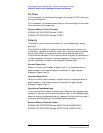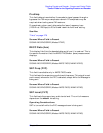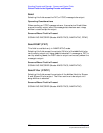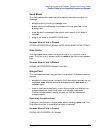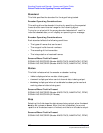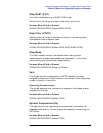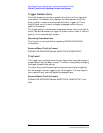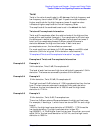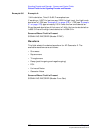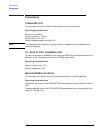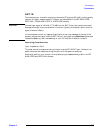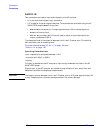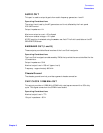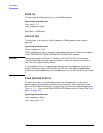
Chapter 8 279
Signaling Encoder and Decoder - Screens and Control Fields
Control Fields for the Signaling Encoder and Decoder
Twist
Twist is the ratio of amplitudes (in dB) between the high frequency and
low frequency tone in each DTMF pair. A positive value indicates a
higher amplitude for the high frequency tones. A negative value
indicates a higher amplitude for the low frequency tones.
The amplitude of the combined tones is set in the AFGen2 To field.
Twist and Pre-emphasis Interaction
Twist and Pre-emphasis affect the relative levels of the high and low
tones within each symbol (tone pair). If pre-emphasis is off, twist sets
the difference in deviation (in dB) between the high and low tones. If
twist is off, pre-emphasis places a 6 dB per octave difference in
deviation between the high and low tones. If both twist and
pre-emphasis are on, the two effects are summed.
For most conditions, set Twist to 2.5 dB, Pre-Emp on, and 60% rated
deviation (3 kHz for a typical 5 kHz deviation rated receiver).
“Examples of Twist and Pre-emphasis Interaction” on page 279
Examples of Twist and Pre-emphasis Interaction
Example 8-3 Example 1:
3 kHz deviation, Twist 0 dB, Pre-emphasis off.
The level of each low tone and high tone individually generate 1.5 kHz
deviation. The tones are summed to produce 3 kHz deviation.
Example 8-4 Example 2:
3 kHz deviation, Twist 2.5 dB, Pre-emphasis off.
The high tone has 2.5 dB (a factor of 1.334) more deviation than the low
tone. The two tones are summed to produce 3 kHz peak deviation.
Therefore, the low tone’s deviation is 1286 Hz and the high tone’s
deviation is 1714 Hz.
Example 8-5 Example 3:
3 kHz deviation, Twist 0 dB, Pre-emphasis on.
There is a 6 dB per octave difference between the high and low tones.
For example, if sending a 1, which has a low tone of 697 Hz and a high
tone of
1209 Hz, the high tone has a deviation of 1209/697 = 1.735 times the
low tone’s deviation. The high tone’s deviation is then 20 ×
log(1209/967) = 4.78 dB higher than the low tone. Since their sum must
equal 3 kHz, the low tone’s deviation is 1097 Hz, and the high tone’s
deviation is 1903 Hz.




